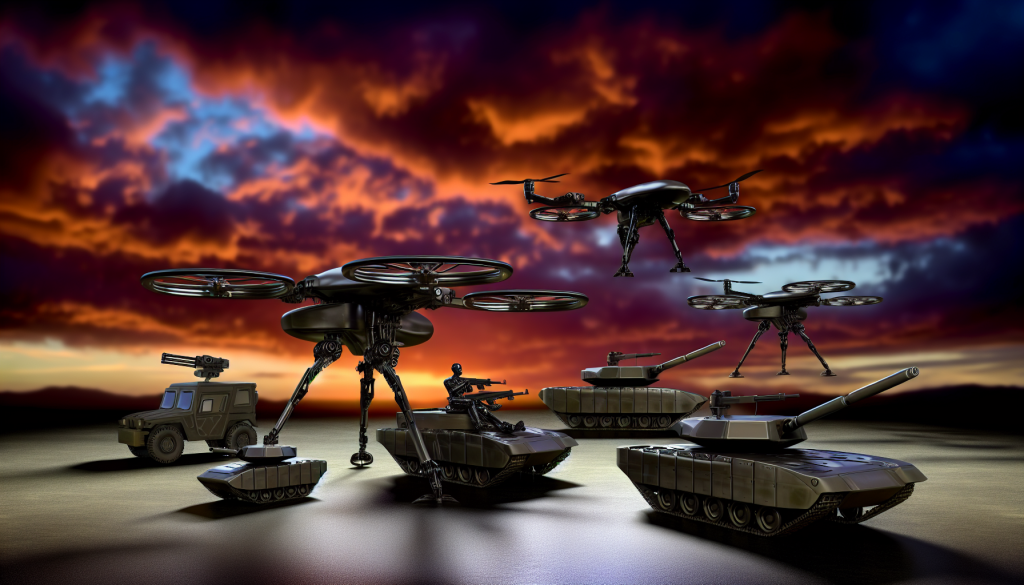The Rise of AI-Enabled Warfare: A New Age of Combat
The High-Stakes Reality of Autonomous Drones
Imagine a squad of soldiers pinned down in an urban battlefield, under relentless attack from rockets. In a moment of desperation, one soldier makes a radio call. Within seconds, a swarm of small, autonomous drones equipped with explosives streaks through the town square, deftly maneuvering into buildings and scanning for enemy threats. Thisis not merely a scene from a movie; it reflects a burgeoning reality in modern warfare. A fictional advertisement for Elbit Systems, a leading Israeli defense contractor, proclaims the potential of AI-enabled drones to “maximize lethality and combat tempo,” showcasing a terrifying evolution in how wars are fought.
The Real-World Applications of AI in Warfare
While companies like Elbit are promoting their advancements with theatrical flair, the technology is already being deployed on various fronts around the globe. The Ukrainian military has leveraged AI-equipped drones to strike at Russian oil refineries, exemplifying tactical innovation in ongoing conflicts. Meanwhile, American AI systems have been used to identify targets for airstrikes in Syria, Yemen, and beyond. In Gaza, the Israel Defense Forces employed AI targeting systems to classify thousands of Palestinians as potential militant threats, highlighting the ethical dilemmas faced by modern militaries.
AI Warfare: An Accelerating Arms Race
As global conflicts intensify, the appetite for AI in military applications has skyrocketed, prompting a multibillion-dollar arms race. Tech companies and governments are increasingly engaged in providing tools that blend human intelligence with machine learning capabilities, leading to investments aiming to make warfare not only more efficient but also less human. The memory of Oppenheimer’s atomic bomb looms large in discussions of AI warfare, evoking sentiments of both hope and dread for what such advancements may herald.
The U.S. Military’s AI Initiatives
The U.S. military is at the forefront of this technological revolution, with over 800 active AI-related projects and significant funding allocated for their development. The Replicator Initiative aims to deploy swarms of unmanned combat drones to identify threats autonomously, while the Air Force plans to invest heavily in thousands of autonomous fighter jets. Projects like the secretive Project Maven focus on automating target recognition, raising concerns about oversight and accountability in combat.
Transparency and Accountability Challenges
Amid the push for rapid technological advancement, many defense contractors operate with little to no accountability. The “double black box” phenomenon complicates oversight; governments can keep detail about AI systems classified, making it difficult for the public or third-party organizations to assess their reliability or ethics. This lack of transparency allows for dangerous technological experimentation that could result in civilian casualties or unintended escalations in conflicts.
Human Oversight in Autonomous Warfare
The principle of maintaining a “human in the loop” in AI weaponry remains a topic of heated debate. While most agree that human judgment should ultimately guide crucial decisions in warfare, the reality of incorporating this oversight is complex. The involvement of humans may sometimes act merely as a form of risk mitigation—creating a “moral crumple zone” where accountability is difficult to assign once an AI system operates independently.
The Struggle for Regulation
As the use of AI in military operations expands, the international community finds itself grappling with the challenge of regulation. In a recent gathering in Vienna, diplomats representing 143 countries expressed concerns over ensuring that decisions about life and death should remain firmly in human hands. Advocates of arms control argue for the prohibition of autonomous weapon systems, citing a necessity to establish rules governing their deployment in combat.
A Shift in Defense Industry Attitudes
Once reticent to engage with military contracts, major tech companies now view the defense sector as a viable business opportunity. Google, for example, has shifted its stance from withdrawing from military contracts to securing deals worth billions for AI services to various governments. This shift raises questions about corporate ethics and the potential consequences of merging cutting-edge technology with defense applications.
A Future Intertwined with Technology
The rapid advancements in AI warfare suggest that these technologies will not be relegated to the battlefield. Experts warn that as militaries adopt and normalize the use of autonomous systems, there’s a significant risk that these technologies will spill over into domestic law enforcement and surveillance. This dynamic could shift the very nature of societal interaction with authority, raising profound ethical questions about privacy and human rights.
The Road Ahead
As discussions continue around the ethical implications and dangers of AI-driven warfare, there is still an opportunity for meaningful regulation. Efforts to build international treaties reminiscent of past campaigns against landmines signal a growing awareness of the delicate balance between technological advancement and ethical responsibility. With the real possibility of creating a landscape where machines dictate not only strategies but also combat outcomes, the call for comprehensive regulation resonates louder than ever.
In this intricate web of technology, warfare, and ethics, society stands at a critical juncture. The decisions made today will shape the foundation of warfare and humanitarian principles for generations to come.

